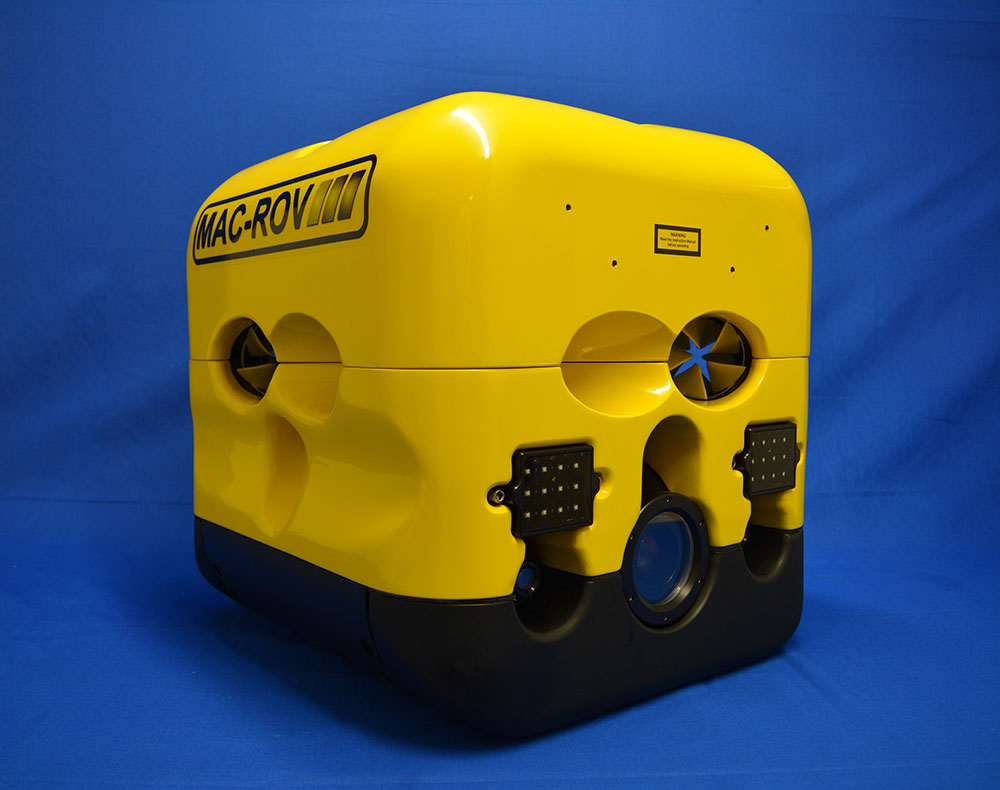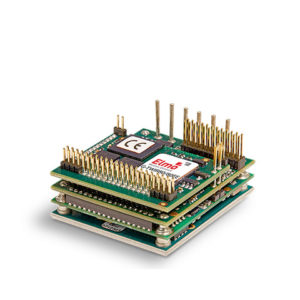A remotely operated underwater vehicle (technically ROUV but commonly just ROV) is a tethered underwater mobile device, an unoccupied underwater robot that is connected to a ship by a series of cables. These cables transmit command and control signals between the operator and the ROV, allowing remote navigation of the vehicle. When All Oceans, a British expert in underwater engineering, wanted to build a fly-out ROV which would operate in some of the deepest parts of the ocean, they turned to Elmo.
Read this case study to learn about:
- Customized Elmo drives withstanding deep-ocean pressures of up to 700 bar.
- Miniature servo drives fitting inside the ROV’s thrusters, freeing up space in the pressure vessel.
- How Elmo’s advanced testing capabilities enable the customer to conduct pressure testing on location.

Machine Requirements
The fly-out ROV built by All Oceans Engineering (AOE) is an auxiliary vehicle which assists larger ROVs with complex tasks on the seabed.
A fly-out ROV operates in tandem with a larger host ROV, to which it is tethered. It is used in deep sea mining, drilling, salvage and scientific applications. It can function as a “buddy” ROV by using onboard lights and cameras to provide additional illumination and visual feedback during inspections. This reduces the likelihood of mistakes during complex tasks and speeds up work rate. Its smaller size and six degrees of movement also enable it to perform a scout function, helping to guide the host ROV through congested spaces such as shipwrecks and geological features.
Crucially, it must be capable of operating with 100 percent reliability, particularly at extreme depths, as ROVs are expensive and difficult to replace. The fly-out ROV’s ability to function at depth must far exceed that of the host ROV, as the fly-out is likely the only hope of recovery in the event of a fault.
Called the MAC-ROV, it requires eight servo drives with sufficient power to provide precision control for the eight thrusters. An earlier MAC-ROV design used a pressure vessel to house the servo drives. However, AOE required that the servo drives fit within a smaller footprint in order to incorporate additional components such as a voltage regulator within the size restrictions.
The Elmo Motion Control Solution
- Gold Twitter servo drives
Because of their small size and high power density, it was decided to install 8 Gold Twitter servo drives on the 8 thrusters of the ROV, which would free up valuable space inside the pressure vessel. However, achieving this meant that the drive must withstand pressure of 700 bar – equivalent to a ton of pressure on each drive.
A special version of Elmo’s Gold Twitter servo drive was developed for handling high pressures due to extreme depths. This meant testing the drive beyond any levels previously undertaken. The pressure testing was carried out over two days at AOE’s facility in Aberdeen, during which it was found that the drive could still respond and operate at 700 bar without any issues. It was then inspected for physical damage before undergoing standard production tests at Elmo’s Head Office in Israel. The modified unit passed all tests.
Gold Twitter
NANO Servo Drive Up to 5600 Watts
Up to 30A/60V, 25A/100V, 10A/200V
Up to R50A/60V, R80A/80V, R70A/100V, R45A/150V, R35A/200V
Results
Brian Abel, Managing Director at AOE, said: “Engineering an ROV for such extreme depths, with severe limitations on space and weight, is a huge challenge. We were keen to free up space inside the pressure vessel to include additional controls, cameras and sonar functions, but found that the only bit we couldn’t engineer was the servo drive. The Gold Twitter was the final piece in the puzzle, so we were extremely pleased that it came through such rigorous testing. ROV operation and engineering is difficult enough as it is, let alone at these kinds of depths, so having a second pair of eyes on the seabed is incredibly useful. The performance of Elmo’s drives will help the MAC-ROV to revolutionize deep sea ROV applications.”


